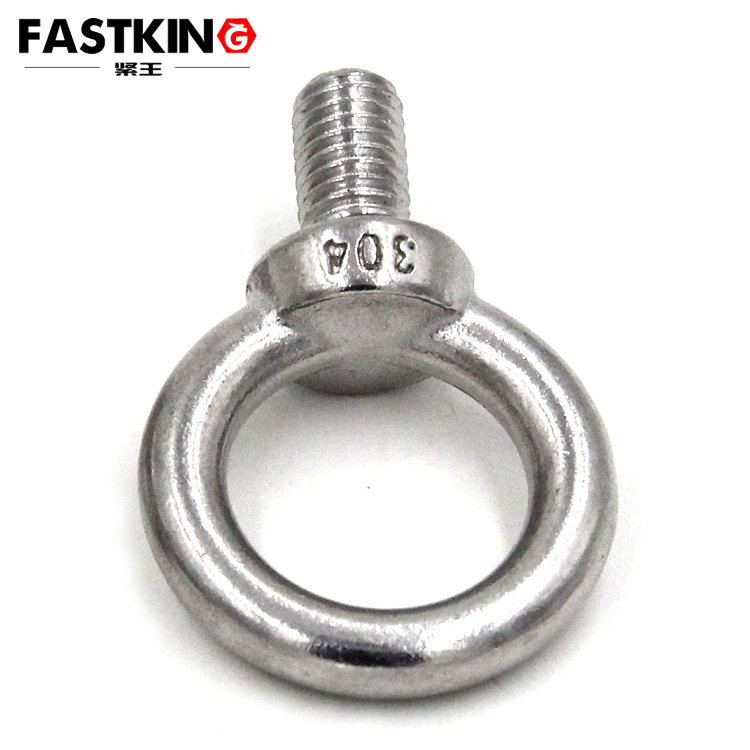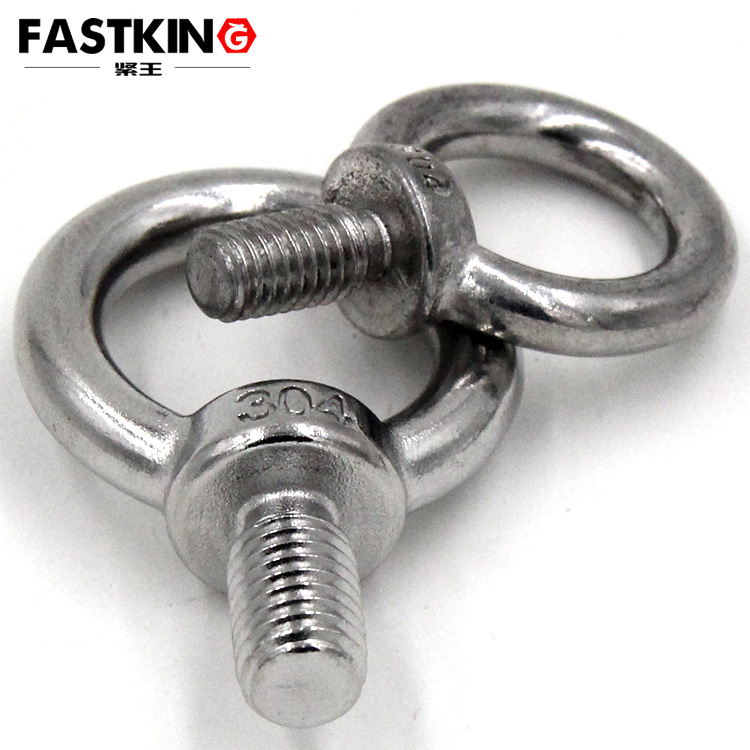Definition and Characteristics of Eye Bolts
An eye bolt is a type of fastener equipped with a loop or eye, primarily used for lifting and suspending equipment or components. It achieves quick lifting and secure fastening through its threaded engagement with a bolt or externally threaded shaft. Eye bolts are characterized by their simple structure, ease of use, and high load-bearing capacity, making them widely applicable across various industries such as mechanical manufacturing, construction, aerospace, ports, and shipbuilding.

Application Scenarios
Mechanical Manufacturing
Eye bolts are commonly used in the mechanical industry to lift and secure large-scale machinery, such as molds, machine casings, and electric motors. They effectively prevent equipment from shaking or falling during the lifting process, ensuring the safety of lifting operations.
Construction
In construction, eye bolts are used to suspend lighting fixtures, air conditioners, ceiling fans, and pipelines. For example, construction workers can use eye bolts to install large lighting fixtures in the halls of hotels or theaters.
Aerospace
In the aerospace industry, eye bolts are used to lift and secure critical components such as aircraft engines and supports. Their high strength and reliability meet the strict requirements for safety and stability in aerospace equipment.
Ports and Shipbuilding
In ports and shipyards, eye bolts are used to lift large steel structures and ship components. Their high-load design ensures stability and safety during lifting operations.
Other Industrial Sectors

Eye bolts are also widely used in industries such as railways, power generation, petrochemicals, mining, and automotive manufacturing to lift and secure various machinery and components.
Methods of Use
Selecting the Appropriate Specification
Choose the right size of eye bolt based on the weight and dimensions of the item to be lifted. The load-bearing capacity of eye bolts varies with their specifications. For example:
An M20-threaded eye bolt has a working load of 2.15 tons.
An M48-threaded eye bolt can handle up to 10 tons.
Ensure that the eye bolt's load capacity exceeds the weight of the item being lifted.
Installation Method
Eye bolts must be installed vertically on a flat support surface to ensure tight contact between the bolt and the support.
During installation, do not use tools to forcefully tighten the eye bolt; instead, manually screw it in until it is snug against the support surface.
If additional stability is needed, place an appropriate washer between the bolt and the support surface.
Precautions for Use
Load Limitations: Do not exceed the maximum load capacity specified for the eye bolt to prevent deformation or breakage.
Inspect the Eye Bolt: Before use, carefully check the eye bolt for any deformation or damage. If visible deformation is detected, the bolt should be immediately scrapped.
Lifting Angle: When lifting at a 45° angle, take measures such as countersinking to ensure the support surface of the bolt is in tight contact with the mating part, and ensure that the two eyes are in the same plane.
Special Materials: If eye bolts made of special steel or heat-treated materials are used, note that their ductility may be reduced, making them more prone to breaking under overload.

4. Regular Inspection
Regularly inspect eye bolts, especially those used frequently or in harsh environments. Check the tightening status of the bolt and the deformation of the eye to ensure they remain safe and usable.
Technical Specifications
Material: Typically made from carbon steel, stainless steel, or alloy steel, depending on the application environment and load requirements.
Strength Grade: Commonly available in Grade 12.9.
Thread Tolerance: Generally 6g.
Surface Treatment: Options include galvanizing, passivation, and chrome plating.
Conclusion
As an efficient and reliable fastener, eye bolts are widely used across multiple industries, particularly in mechanical manufacturing, construction, aerospace, and ports. Proper selection and use of eye bolts can significantly enhance the safety and efficiency of lifting operations. Adhering to load limitations, installation standards, and regular inspection requirements is crucial for ensuring the safe use of eye bolts.
